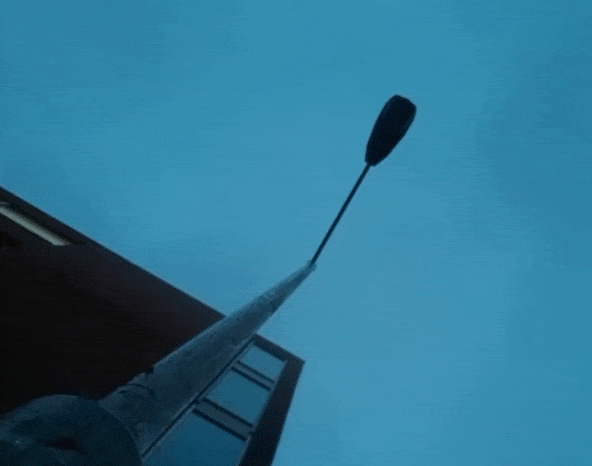Sodium vapour street lamp
- NMIxNCAD

- Jun 4, 2020
- 3 min read
Updated: Jul 1, 2020
Taking leave of our senses at twilight
By Laura De Búrca
This short moving image, taken beneath a street light in the north inner city of Dublin 7, captures the moment of ignition when the amber glow of a low pressure sodium vapour bulb starts up at dusk.
Dublin is in the early stages of a phasing out of high-intensity discharge lamps. There are approximately 40,000 street lamps lighting Dublin streets each night. There are two types of HID (High Intensity Discharge) lamps commonly deployed. The high pressure sodium bulb produces a rosy light and the more common low pressure bulbs produce a monochromatic warm amber light most associated with urban nightscapes.
The quality of light generated by the LEDs that are replacing sodium bulbs is far more akin to daylight - a cooler, whiter light. This time of transition at dusk, sometimes called ‘the golden hour’ is therefore destined to change with the conversion to public lighting based on LED technology. In terms of light waves, the night is morphing into the day. The SOX luminaries, as they are officially known (see the Standardised Public Lighting Inventory Template User Manual) are a type of High Intensity Discharge discharge lamp, involving a bulb widely used to light urban spaces for much of the 21st century.
Since the 1960s, Dublin City Council has been responsible for the provision and maintenance of city lighting.
In 2016, new plans were published which herald the discontinuation of current systems. Each sodium lamp still standing will eventually be extinguished and LEDs will take their spot(light). These moves are made to be in accordance with economic and energy consumption targets, in response to the Dublin City Development Plan 2016-2022.
The light-emitting diodes which give LEDs their acronym make sense for an automated future as they are fully programmable and, as such, can be fully integrated into a ‘smart city’ approach. The overwhelming attraction and motivation of LEDs is that they are so cheap to run.
This unfortunately is leading to overuse, meaning the amount of light given off by cities increases and energy consumption is not reduced. Everyday can’t be Christmas.
Dublin is in the early stages of a huge urban transformation, but we still enjoy an extended twilight. Our geographical position well north of the equator means it never really gets fully dark in Spring and Autumn. Twilight is worth celebrating for as many reasons as there are photographs of sunsets. The impact on the aesthetics of the night will be incremental but will tangibly transform the fabric of the night. As each old amber bulb breaks, it will emit its final rays. A mass analogue countdown to sodium vapour decommission.
There are many other sounds, activities, smells and sights through which the city is expressed. There are things all lit up, from all angles — traffic lights, vehicle headlamp beams, neon signs, backlit advertising panels, billboards, bus stops, shops, cafes, bars, restaurants, security lights, emergency exit lights and the flashing lights of emergency vehicles. Streetlights allow a city to be livable around the clock, for its inhabitants.
The city is also home to people and it is my home. Birds, insects, foxes, bats and bacteria all live by the sun. As migratory birds fly over the city, miniature laboratories line the streets at intervals, as civil twilight passes, a sympathetic reverse sunset is performed, not at the horizon but repeated, dotted thousands of times in glass cases suspended above our heads as we walk, drive and cycle along the streets.
The shift in technology that is impending barely acknowledges the effects this ‘effective’ lighting will have on living creatures, including us. Fortunately, Citizen Science offers respite. A light meter will be installed at Dunsink Observatory, to be part of the growing network monitoring light pollution in Ireland. This will contribute to the debate about light pollution and support initiatives to make the night sky darker again.
At the end of the day, the ubiquitous orange glow of sodium vapor lamps will soon be no more. The laws that govern city streets and the laws of nature co-exist as day and night both reside at twilight while the final rays of light expand and depart. Let’s not take leave of our senses.
Image credits
All images author's own.












Comments